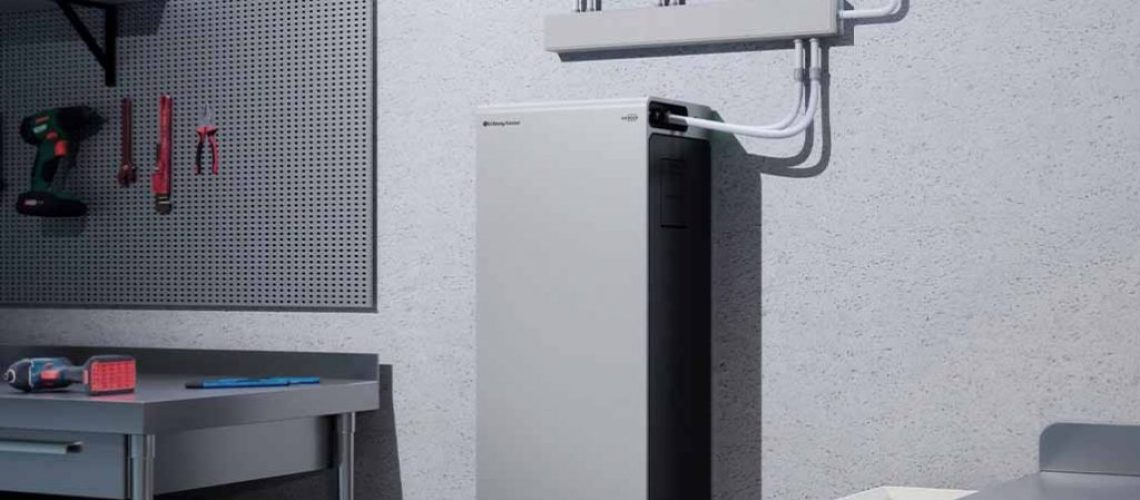LG has developed two versions of its new enblock E storage system, each with usable energy capacities of 12.4 kWh and 15.5 kWh. It says the two models, sized at 451 mm x 330 mm, can be easily deployed in small spaces.
From pv magazine global
South Korean conglomerate LG has unveiled a new storage system for residential applications. The enblock E system is available in two versions, with usable energy capacities of 12.4 kWh and 15.5 kW.
“With just a few millimeters required on each side, the storage cabinet is not limited in any way when it comes to installation,” the company said in a statement. “Thanks to the IP55 protection class, enblock E can be operated in the cellar as well as in the garage without any problems.”
The system features lithium iron phosphate battery (LFP) cells manufactured by the group’s LG Energy Solutions unit. It is also compatible with inverters from major producers such as Fronius, Kostal, GoodWe and SMA.
The smaller model has a usable energy capacity of 12.4 kWh and a battery capacity of 56.6 Ah. The voltage range is between 180.0 V and 262.8 V, while the nominal voltage is 231.8 V.
The system’s maximum charge-discharge current is 36.5 A and the maximum charge-discharge power is 6.2 kW. The battery pack’s roundtrip efficiency is more than 95%.
The larger product offers a usable energy capacity of 15.5 kWh and the same battery capacity as the smaller product. The voltage range is between 225.0 V and 328.5 V, while the nominal voltage is 289.8 V.
The system’s maximum charge-discharge current is 36.5 A and the maximum charge-discharge power is 7.7 kW. The battery pack’s roundtrip efficiency is more than 96%.
The two different models measure 451 mm x 330 mm, which enables easy deployment in the “furthest” corners, said the manufacturer.
“Owners of a PV system can integrate enblock E on the DC side with a new solar system or retrofit an existing solar system on the AC side,” said LG. “If the originally installed storage capacity is not sufficient, enblock E allows an additional storage module to be retrofitted up to two years after commissioning.”






